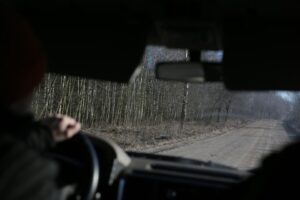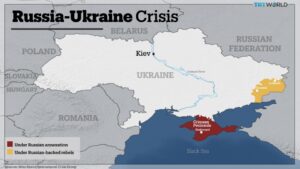Myth 1: Going under a doorway when an earthquake strikes
This is very outdated advice. In the past earthquakes in unreinforced masonry structures and adobe homes, the door frame was the only thing standing in the aftermath of the disaster. Hence why it led to the belief that doorways are the safest place in the house.
If you were at home during the event of an earthquake and you are looking to get yourself to safety, do not go under a doorway. Doorways are no safer than any other place in a house. You are safer practising the “drop, cover, and hold” manoeuvre under a sturdy or strong piece of furniture like a desk or a table.
Myth 2: We can stop earthquakes
We cannot prevent earthquakes or stop them once it has started. What we can do is mitigate their effects in their aftermath as much as possible, by building more safer structures, taking pre-emptive measures, and identifying earthquake faults and lands prone to sliding or liquefying during strong tremors.
Myth 3: Earthquake faults open wide enough to absorb people and buildings
One popular thing that a number of people believe and dread is a gaping fault. A fault that gapes wide enough to the point where skyscrapers and people will fall into it. However, gaping faults only exist in books, movies and television shows.
During the event of an earthquake, the ground moves across a fault, not away from it. If it was possible for a fault to open widely, there would not be any friction, hence there would be no earthquakes. Shallow crevasses can be formed during earthquake-induced landslides or other types of ground failures. Faults, however, do not gape open during an earthquake.
Myth 4: If the first few seconds of an earthquake are not powerful, there is no reason to run for safety
An earthquake’s initial shake is not an indication of its potential full force. It is widely advised that at the moment upon feeling any shaking, take cover and hold on.
Myth 5: Earthquakes strike when the weather is hot and dry
It is a common belief that earthquakes are more frequent in certain types of weather. However, there is no correlation between weather and earthquakes. Earthquakes start many miles below the region affected by surface weather.
Every region or place in the world has a story about earthquake-related weather, and the type of weather is the type of weather that people remember when the earthquake occurred.
Myth 6: Large-magnitude earthquakes always hit early in the morning
Earthquakes can strike at any time throughout the day. For example, the 1940 Imperial Valley earthquake was at 9:36 PM, and the 1989 Loma Prieta earthquake hit at 5:02 PM.
People who remember the time or weather myths tend to recollect earthquakes that fit the pattern and forget the ones that do not.
Myth 7: Aftershocks are less dangerous
For some reason, it is implied that an aftershock is somehow a less dangerous event. And yet, as far as we can understand, an aftershock of a certain intensity or magnitude is no different from an independent temblor of a similar intensity. The shaking and the level of energy released are the same. Also, aftershocks can be more fatal than mainshocks.
Researchers have recently shown that any earthquake or aftershock has a small statistical chance of triggering a larger tremor. So, a single earthquake can potentially be an aftershock and a foreshock, further clouding the differences between them.
Myth 8: You must run outside if you are indoors during an earthquake
If you are indoors, stay where you are by taking cover under a strong piece of furniture until the earthquake shaking stops. Once you are certain that it is safe to exit, you may evacuate the building you are in. Research shows that most injuries tend to occur when people within a building move around or attempt to go outside.
Myth 9: Animals can sense earthquakes before they happen
Despite many reports and eyewitness accounts over the years, it is not possible to determine whether animal behaviour is in response to a future earthquake. Although it is observed that animals like dogs can sense or feel the early stages of an earthquake before humans do, there is no concrete evidence yet that substantiates the idea that animals can predict earthquakes.
Myth 10: Mega-quakes can happen
Strictly speaking, mega-quakes of magnitude 10 or more are possible; however, experts agree that they are implausible. The magnitude of an earthquake is related to the length of the fault on which it occurs. The longer the fault, the larger the earthquake.
For example, the San Andreas Fault is only 800 miles long, and to generate a 10.5 magnitude earthquake would require the rupture of a fault that is many times the length of the San Andreas Fault. No fault long enough to generate a magnitude 10.5 earthquake is known to exist.
The largest earthquake ever recorded was a magnitude of 9.5 on May 22, 1960, in Chile on a fault that is almost 1,000 miles long.



















Be First to Comment